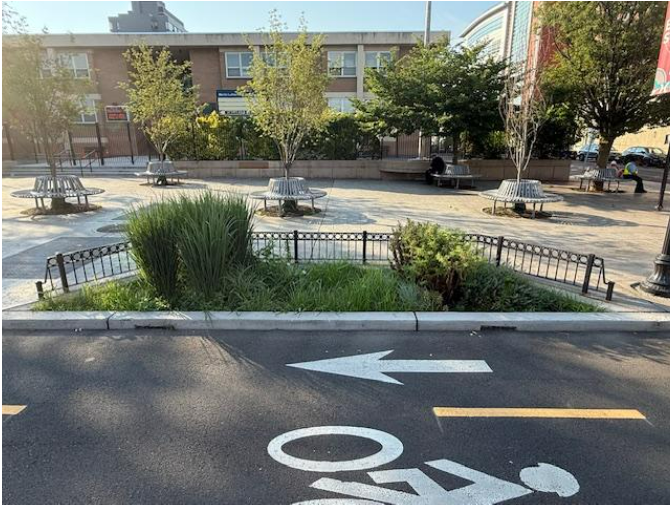Sustainably Speaking - How You Can Support the Role of Businesses in the Sustainability Movement
/Businesses nowadays are recognizing their role in the climate crisis. Many of them are finding new innovative ways to fight climate change through sustainability.
Individual efforts, while important, are not sufficient to address climate change, which is primarily driven by the actions of a small percentage of the world's richest people. Businesses, particularly multinational corporations, have recognized the financial benefits of sustainability practices, such as waste reduction, using renewable energy, and designing eco-friendly products. Many of them have even appointed a CSO (Chief Sustainability Officer) alongside their CEO and CFO, and many are adopting a circular economy model, which positively impacts their bottom line and increases their brand value.
What Can We Do To Support These Ongoing Efforts?
There are three action items that people can take to help companies in their fight against climate change.
1. ♻️ Participate in the Circular Economy
Many of the ongoing efforts are aimed at shifting from a "take-make-dispose" model to a circular one. Consumers can directly support this by closing the loop by actively using Take-Back and Trade-In Programs: When a company like Apple, Patagonia, or IKEA offers to buy back, trade in, or take back your old product, participate. These programs are essential to ensure the materials re-enter the supply chain instead of a landfill and they usually offer an incentive like discounts and/or loyalty points.
Choose Repair, Refurbished, and Secondhand. When your device breaks or garment is damaged, choose the company's repair service (like Patagonia's or device manufacturers') over replacement. This validates the business case for designing repairable products.
When you need a new item (especially electronics), choose a certified refurbished product. This directly supports the company's "Product Life Extension" initiatives.
Follow disposal instructions by putting waste in the proper receptacle. When a product or package has complex recycling or composting instructions, take the extra step to follow them correctly. For example, rinsing a container or separating materials ensures the company's sustainable packaging investment pays off.
Ultimately, the greatest support for resource efficiency is simply reducing overall consumption. By choosing durability, owning fewer items, and sharing/renting where possible, you validate the core circular principle of reducing demand for new materials.
2. Amplify Your Voice (and Their Efforts)
For every company that takes a sustainability risk, there are many others waiting to see if it pays off. Your voice and purchasing patterns provide crucial evidence and an incentive for other players in the marketplace to follow suit.
One of these ways is by publicly acknowledging and rewarding their efforts: When you see a company make a positive change (like switching to recyclable packaging or 100% renewable energy), leave a positive social media post, write a glowing review, or send a congratulatory email. Praising them publicly sends a signal to their competitors, proving that sustainability is a competitive advantage.
Ask clarifying questions about their sustainability claims. For example, ask for their Scope 3 emissions report (emissions related to their value chain and supply chain, which the company does not directly control but can greatly influence) or details on their water conservation plans, which thankfully many companies are undertaking given the finite supply of water on the planet. This encourages transparency and pushes them to back up their marketing with data, and avoiding appearing more eco-friendly than it actually is) AKA greenwashing.
If you purchase a sustainable product but find the packaging confusing, the recycling process too hard, or the product quality lacking, provide specific, constructive feedback. This can help companies improve the product and increase adoption of the sustainable version, which is the ultimate goal.
3. 💳 Align Your Wallet and Investments
Financial decisions are the most direct way to reinforce sustainable business models.
Vote with your wallet consistently. Actively seek out and preferentially buy products from companies that are making verifiable commitments. Check their transparent climate goals, supply chain, and any sustainability certifications like B Corp or FSC (Forest Stewardship Council). Every purchase reaffirms their sustainable business model. Be willing to pay a slight premium for products that genuinely embody these values. Sustainable sourcing, fair labor, and high-quality, durable materials often cost more. This allows the company to sustainably scale their ethical practices without compromising on quality or exploiting labor.
Invest in ESG Funds (The Investor Voice):
If you invest (even a small amount in a 401(k) or brokerage account), choose funds that prioritize companies with strong ESG (Environmental, Social, and Governance) ratings. To check ESG ratings you can check any finance or investment website, including consumer friendly sites like Yahoo Finance, which now have ESG rating information available. By directing capital toward sustainable firms, you lower their cost of capital, making it easier for them to finance green initiatives and signaling to the financial market that sustainability is a metric of success.
Suhas Vittal is an event coordinator for Sustainable JC. He was born and raised in Jersey City, NJ, and is a graduate of NJCU, where he received his undergraduate degree in public relations and marketing. He is passionate about educating and encouraging others to care about the environment and to make sustainable lifestyle choices.








